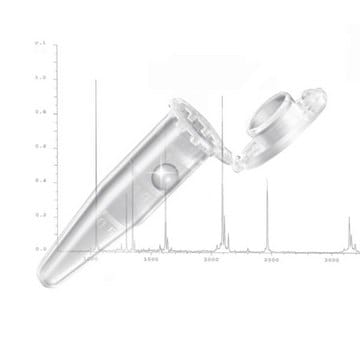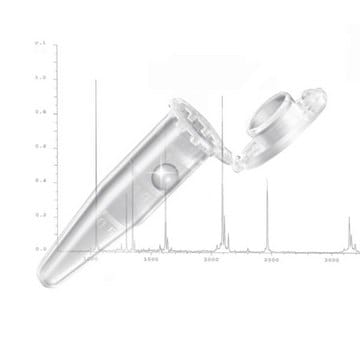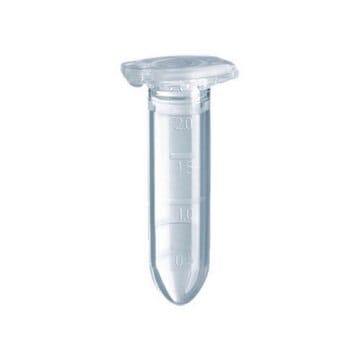EP022431081
Eppendorf® Protein-LoBind-Röhren
capacity 1.5 mL, PCR clean, pkg of 100 ea (2 x 50ea)
About This Item
Empfohlene Produkte
Materialien
(push fit)
polypropylene cap
Sterilität
non-sterile
Leistungsmerkmale
PCR clean
Verpackung
pkg of 100 ea (2 x 50ea)
Hersteller/Markenname
Eppendorf® 022431081
Parameter
-18,000 × g max. RCF
Kapazität
1.5 mL
Durchmesser
10.7 mm
Farbe
clear
Eignung
suitable for PCR
Bindungsart
low binding surface
Suchen Sie nach ähnlichen Produkten? Aufrufen Leitfaden zum Produktvergleich
Allgemeine Beschreibung
- Eppendorf LoBind material ensures optimized sample recovery for improved assay results
- Free of surface coating (e.g., silicone) to minimize the risk of sample interference
- Lot-certified PCR clean purity grade: free of human DNA, DNase, RNase and PCR inhibitors
- Available in tube, microplate, and deepwell plate formats for easy-up scaling
- Precise lid sealing to minimize evaporation
Leistungsmerkmale und Vorteile
Rechtliche Hinweise
Hier finden Sie alle aktuellen Versionen:
Analysenzertifikate (COA)
It looks like we've run into a problem, but you can still download Certificates of Analysis from our Dokumente section.
Wenn Sie Hilfe benötigen, wenden Sie sich bitte an Kundensupport
Besitzen Sie dieses Produkt bereits?
In der Dokumentenbibliothek finden Sie die Dokumentation zu den Produkten, die Sie kürzlich erworben haben.
Unser Team von Wissenschaftlern verfügt über Erfahrung in allen Forschungsbereichen einschließlich Life Science, Materialwissenschaften, chemischer Synthese, Chromatographie, Analytik und vielen mehr..
Setzen Sie sich mit dem technischen Dienst in Verbindung.








